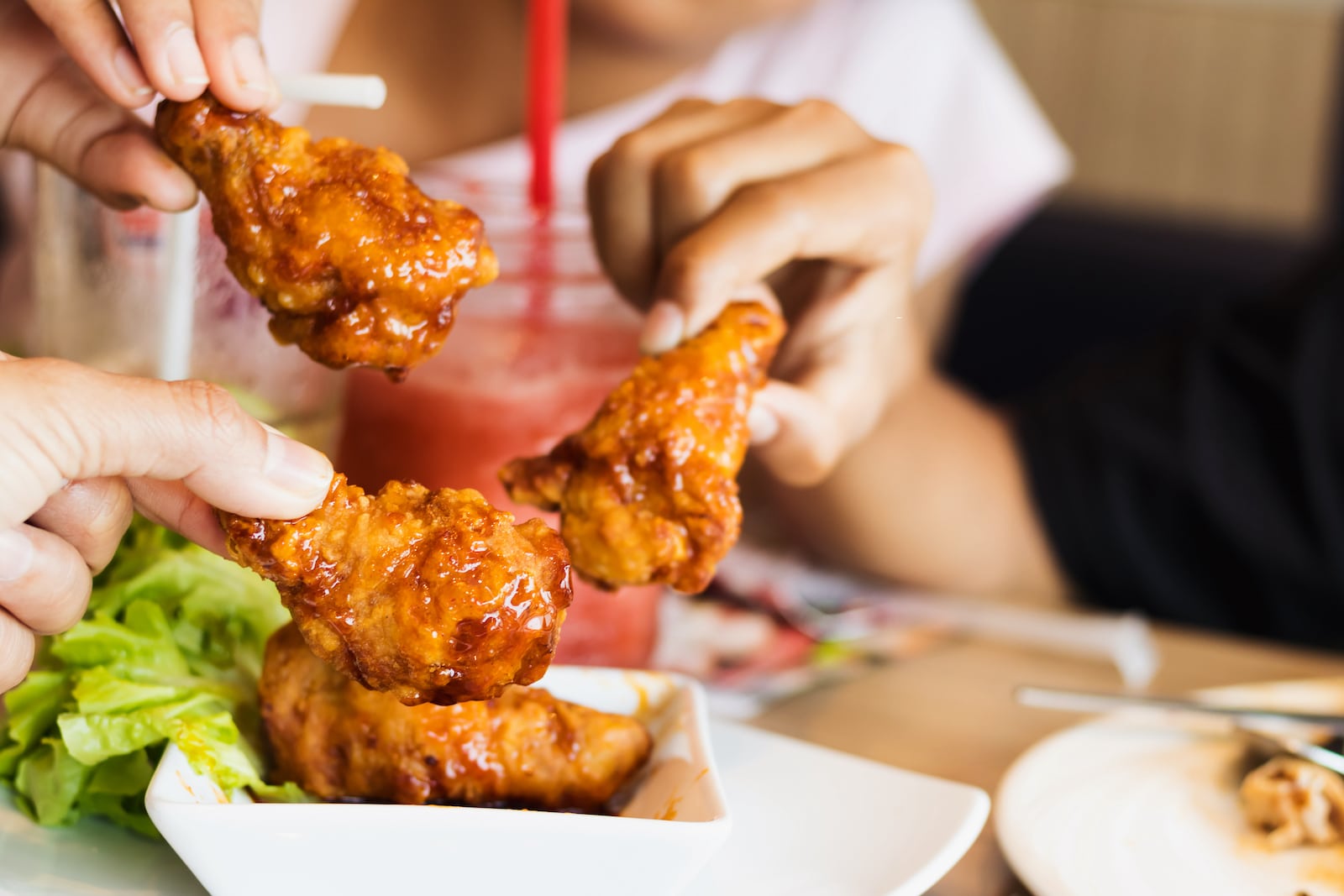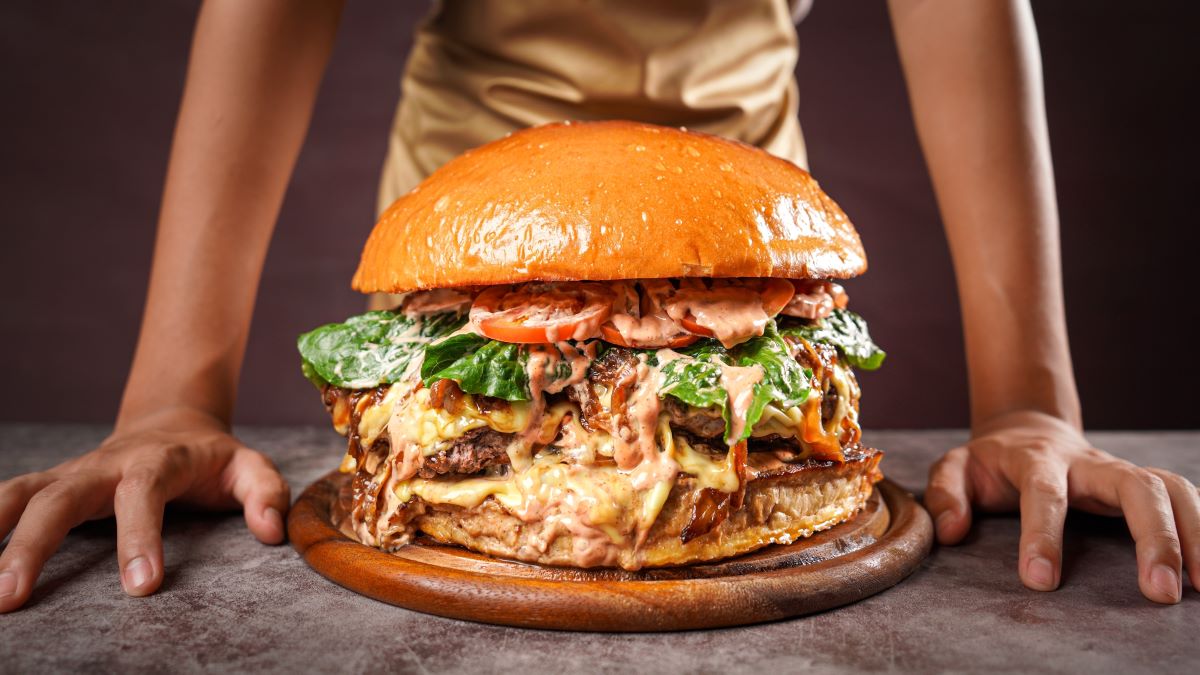Ever notice how food portions in America seem to defy logic? The bigger-is-better mentality has infiltrated everything from our fast food meals to our kitchen pantries, and it’s taking a toll on more than just our waistlines.
Supersized Portions, Supersized Problems

In America, it’s not just about getting your money’s worth—it’s about getting more than you could possibly eat. The result? Bigger portions lead to overconsumption, which in turn fuels the obesity epidemic. And it’s not just fast food; restaurant meals, grocery store packaging, and even home-cooked dinners have all ballooned in size.
Food Waste on the Rise

With great portions comes great waste. The USDA estimates that Americans waste nearly 40% of the food they buy. When portions are too big to finish, the excess ends up in the trash, contributing to a massive environmental problem. All this wasted food isn’t just bad for the planet—it’s also a waste of the money spent on it.
The Marketing of Excess

Ever wonder why you’re tempted to go for the large combo? It’s no accident. Fast food chains and restaurants have mastered the art of upselling, enticing you with deals that make bigger portions seem like a bargain. But the hidden cost is the impact on your health and the environment.
The Health Toll

Bigger portions mean more calories, more sugar, and more fat. The health consequences are clear: rising rates of obesity, diabetes, and heart disease. The culture of excess has turned food from a source of nourishment into a contributor to chronic health issues.
Impact on Family Meals

Family dinners used to be about connection and nourishment, but the culture of excess has crept into our homes. Portions at family meals are often oversized, leading to overeating and contributing to the cycle of unhealthy eating habits being passed down to the next generation.
Fast Food, Fast Problems

The fast food industry thrives on the concept of supersizing, but what happens when the habit sticks? Frequent consumption of these oversized meals not only impacts individual health but also reinforces the normalization of excess in our diets.
Minimalism at the Table

In response to the culture of excess, some are embracing a minimalist approach to food. Smaller portions, mindful eating, and a focus on quality over quantity are gaining traction. This shift encourages a more sustainable relationship with food—one that’s better for both our bodies and the planet.
The Environmental Impact

It’s not just our health that’s suffering. The production of excessive amounts of food has a huge environmental footprint. From the water used to grow crops to the methane emitted by landfills full of wasted food, the environmental cost of America’s food excess is staggering.
Reclaiming Control

The first step in breaking the cycle of excess is awareness. By recognizing the marketing tactics that push us toward larger portions and being mindful of our own consumption habits, we can start to make choices that are better for our health and the planet.
The Cost of More

Ultimately, the American obsession with supersized portions and excess comes at a steep price. The health, environmental, and financial costs of this culture are too high to ignore. It’s time to rethink our approach to food and embrace a more balanced, mindful way of eating.
We Need to Change Our Love for Excess

America’s love for excess has shaped our diets, our health, and our environment, but it doesn’t have to define our future. By shifting towards smaller portions, reducing food waste, and focusing on quality over quantity, we can start to undo the damage. After all, when it comes to food, sometimes less truly is more.
20 Foods You Should Never Put on Your Plate

Listen up—these foods might seem harmless, but they’re secretly sabotaging your health. They look innocent in your kitchen, but trust me, they’re trouble. Here’s a quick rundown of 20 foods that aren’t as friendly as they seem. Consider this your heads-up! 20 Foods You Should Never Put on Your Plate
Taco Bell’s Biggest Value Meal Ever Hits the Market

America’s most popular Mexican-American fast food chain has joined the so-called “fast food wars,” offering new meal deals to bring customers through their doors. Taco Bell’s Biggest Value Meal Ever Hits the Market
Cut These 20 Ultra-Processed Foods from Your Diet

American supermarket shelves may dazzle with convenience and flavor, but beneath the flashy packaging lurks a world of ultra-processed foods. Can you decipher labels to make healthier choices for your well-being? Cut These 20 Ultra-Processed Foods from Your Diet
Featured Image Credit: Shutterstock / PAPA WOR.
The content of this article is for informational purposes only and does not constitute or replace professional advice.
The images used are for illustrative purposes only and may not represent the actual people or places mentioned in the article.
For transparency, this content was partly developed with AI assistance and carefully curated by an experienced editor to be informative and ensure accuracy.

